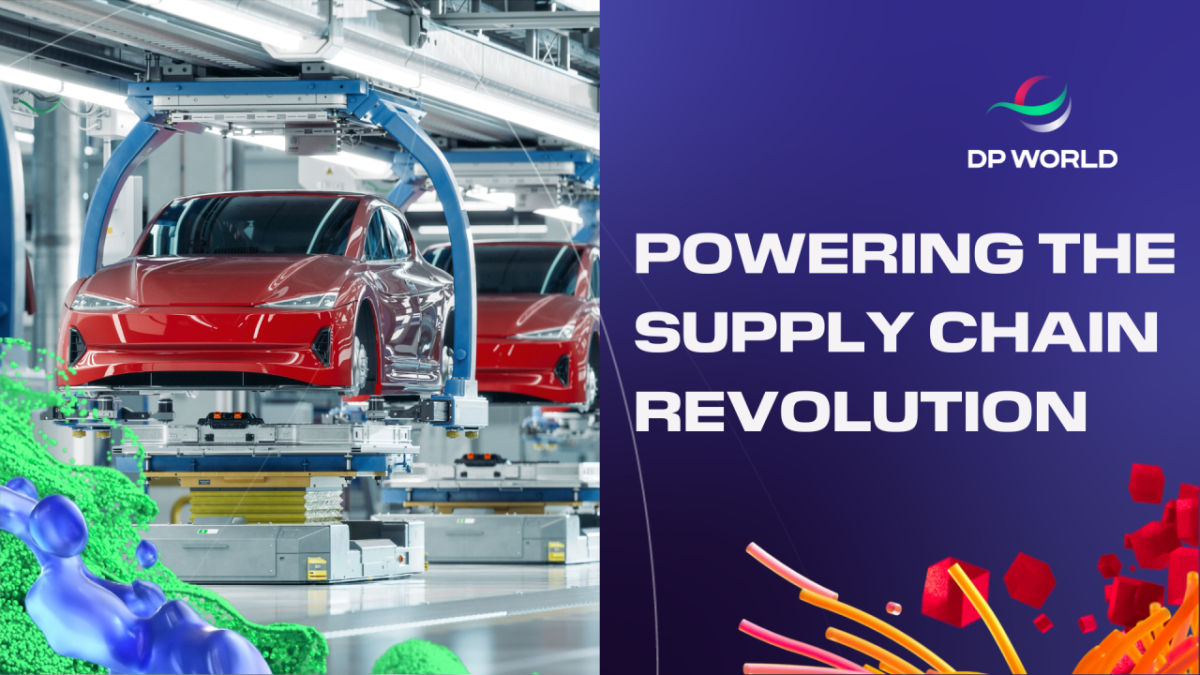Powering the Supply Chain Revolution: Addressing the Impact of Electric Vehicle Requirements on Supply Chains
From battery-driven logistics to factory retooling, discover how the rise of electric vehicles is reshaping manufacturing and creating new opportunities for innovation.

The automotive industry is undergoing a seismic shift as traditional internal combustion engine (ICE) vehicles give way to EVs. After U.S. EV sales surpassed 1 million for the first time in 2023, the International Energy Agency (IEA) projects U.S. EV sales to exceed 17 million by the end of 2024, marking a 20% increase from 2023. Moreover, Gartner Inc. projects EV use globally to grow in 2025 by 33%, with 85 million EVs on the road by the end of next year. This transition is reshaping global supply chains in ways manufacturers are still scrambling to adapt to.
The report co-authored by DP World and Canary Creative, “Navigating the Opportunities and Challenges of an Electric Vehicle-Centric Manufacturing Supply Chain,” found that the EV supply chain revolution is being driven primarily by the battery—the most expensive and critical component of an EV. The battery-centric nature of EVs is forcing manufacturers to rethink how vehicles are made, stored, and shipped.
But the supply chain overhaul doesn’t stop at batteries. EVs require far fewer moving parts than their ICE counterparts—just 20, compared to 200—which means leaner production processes, but also different logistical challenges. From retrofitting factories to meet the demands of EV production, to ensuring the safe transportation of hefty batteries, the industry is being transformed from the factory floor to the customer door. Let’s dive into some of the key impacts and opportunities this shift presents for supply chains.
Battery-First Manufacturing: A Heavyweight Champion
The battery is the undisputed star of the EV show. These energy-packed giants can weigh as much as one ton, especially in popular electric SUVs. As a result, proximity between battery manufacturing and EV assembly lines has become crucial. Shipping batteries across long distances is not only expensive but also risky due to their weight and safety concerns—such as the potential for fires. Factories need specialized equipment to handle these behemoths, along with climate-controlled storage and fire suppression systems in warehouses.
Even though lithium-ion battery prices saw a slight rise in 2022, Bloomberg New Energy Finance predicts they’ll drop below $100 per kilowatt-hour by 2026, which is great news for American consumers, whose EVs typically demand 40% larger batteries than global averages. The logistics of moving these batteries around—and minimizing their environmental footprint—is a challenge and an opportunity for innovation.
Factory Retooling: Out with the Old, In with the Electric
Traditional automotive factories are getting a major facelift to accommodate the production of EVs. Retrofitting existing ICE vehicle plants to handle electric vehicles requires expensive equipment upgrades. Factories now need automated vehicles that can transport 2,000-pound battery packs from one station to the next, replacing the traditional conveyor belts used for lighter ICE components.
The changes don’t end there. EVs require far fewer parts than ICE vehicles, eliminating the need for complex casting and machining equipment used for pistons, cylinders, and camshafts. Instead, EV factories focus on simpler components like rotor hubs and magnets. This shift has pushed manufacturers to adopt bulk-metered, just-in-time delivery systems, where components are delivered in larger batches rather than meticulously sequenced deliveries.
Transportation & Storage: Safety First, Always
Shipping EVs introduces new logistical hurdles, particularly around battery safety. Batteries must be stored in climate-controlled warehouses with extensive fire safety precautions. In some cases, EV batteries are shipped separately from the vehicles to minimize fire risks during transportation. The American Bureau of Shipping has also issued guidelines for shipping EVs, recommending video monitoring and installing fire detection systems on cargo ships.
What’s more, EVs need to be charged to between 20% and 50% before shipping to reduce the risk of fires while still having enough power to move on and off cargo ships. Trucks and ships transporting EVs must also account for the heavy battery weight, which means current loading procedures may need adjustments to comply with weight limits.
Circular Economy: Recycling EV Components
The EV supply chain isn’t just about getting new cars to market—it’s also about what happens when those cars reach the end of their lifecycle. The rise of the circular economy in the EV sector is key to reducing both costs and geopolitical risks. As EV manufacturers face an uncertain future regarding access to critical minerals like lithium and cobalt, recycling and repurposing these materials is becoming a top priority.
Recycling old EV batteries and using the reclaimed minerals to build new ones not only makes financial sense but also promotes environmental sustainability. The Inflation Reduction Act (IRA) encourages this approach by offering incentives for battery materials recycled within the U.S. to qualify for domestic-content benefits, regardless of their origin.
Low-Maintenance, High-Impact Logistics
One of the perks of driving an EV is that they require much less maintenance than their ICE counterparts, thanks to having fewer moving parts. But that doesn’t mean the supply chain for EV parts disappears entirely. For instance, the heavier weight of EV batteries means tires wear out 20% faster, creating a steady demand for replacements. Additionally, while EV batteries have long lifespans, they’ll eventually need replacing—though not before 8 to 20 years or 100,000 to 200,000 miles.
This ongoing need for parts and maintenance presents a unique opportunity for logistics companies to step in and offer services that go beyond just shipping new cars. Some logistics providers are already handling light repairs and refurbishment for consumer electronics, and similar models may emerge for EVs.
A Roadmap for the Future
The rise of EVs is already reshaping the manufacturing supply chain, but the real transformation is just beginning. From battery-first production to embracing the circular economy, the logistics and automotive industries are navigating uncharted territory. While challenges like battery safety and factory retooling remain, the opportunities for innovation—and profit—are vast.
For more insights into the supply chain shifts created by the transition to electric vehicles, download the full report co-authored by DP World and Canary here: Navigating the Electric Vehicle-Centric Supply Chain.

